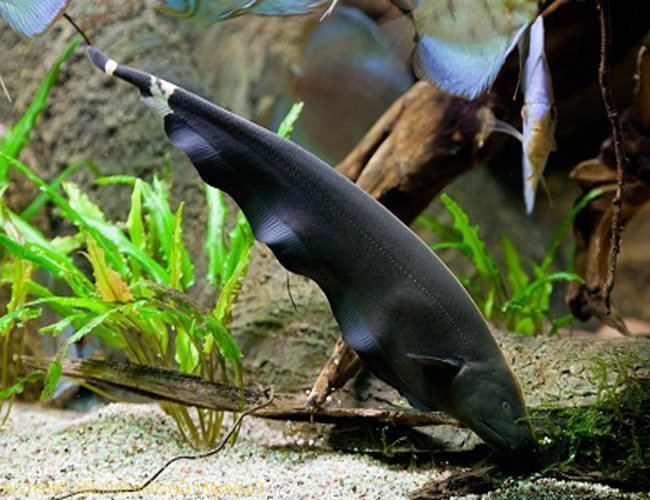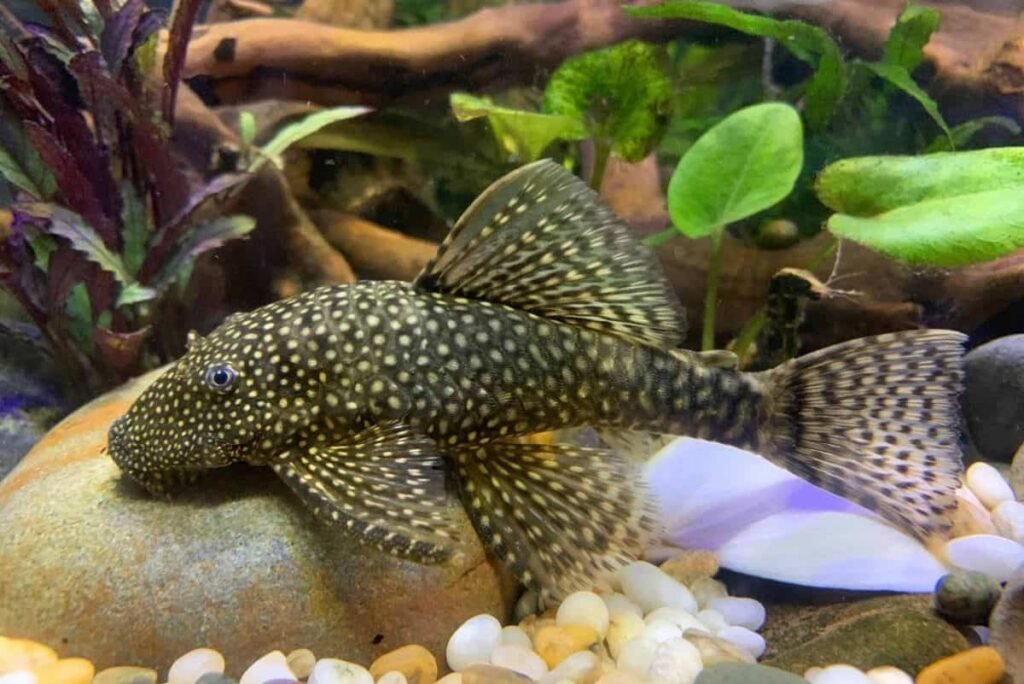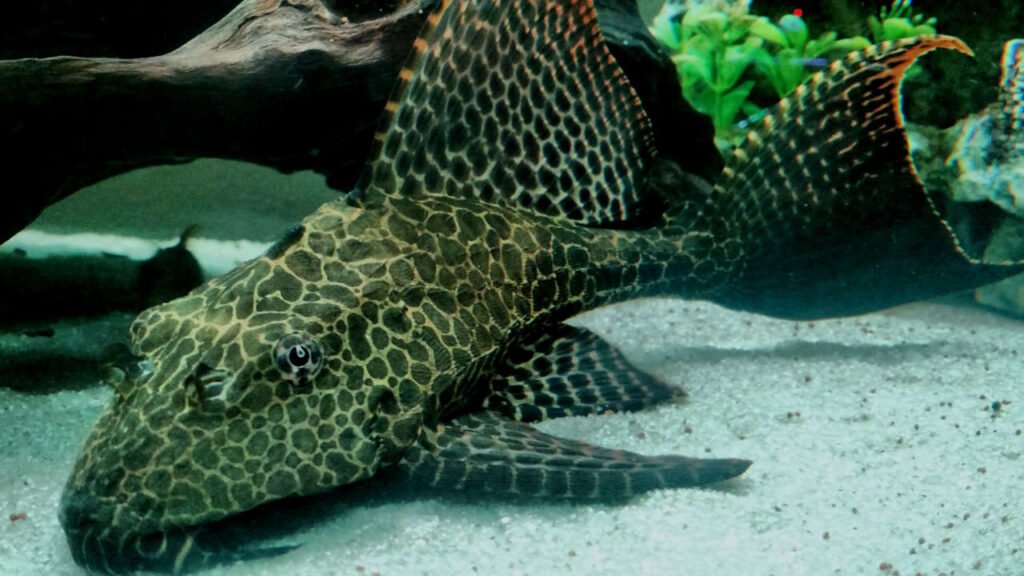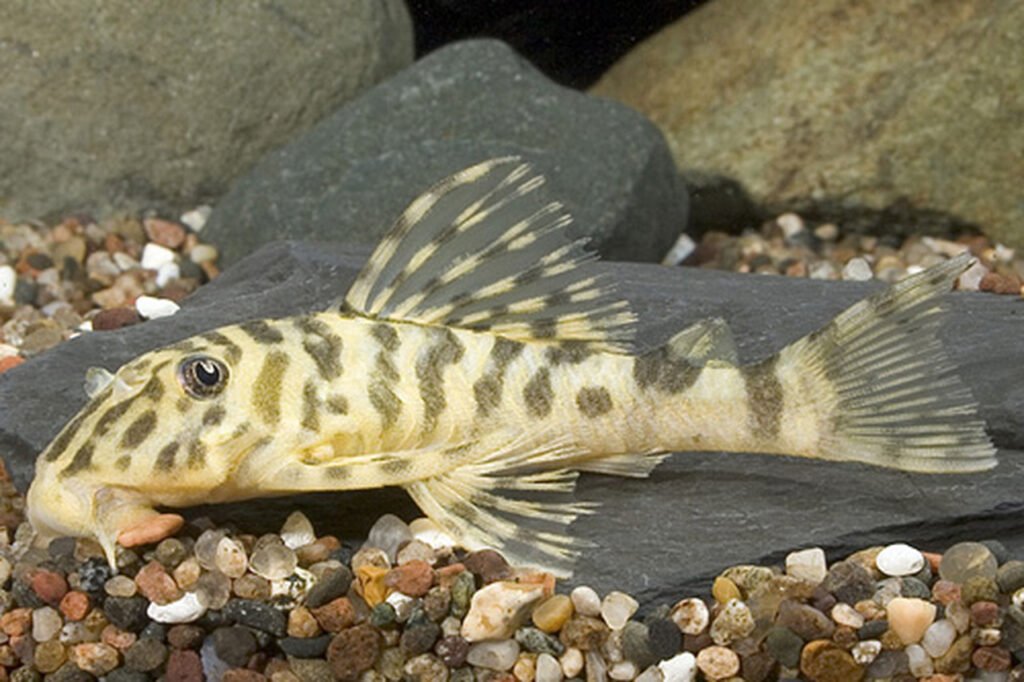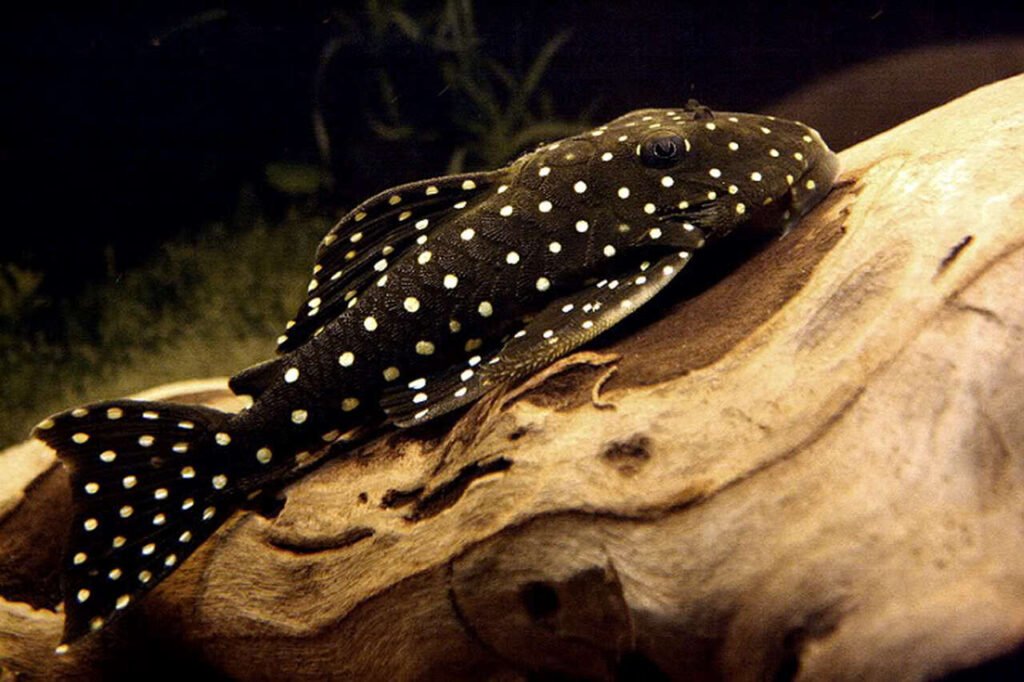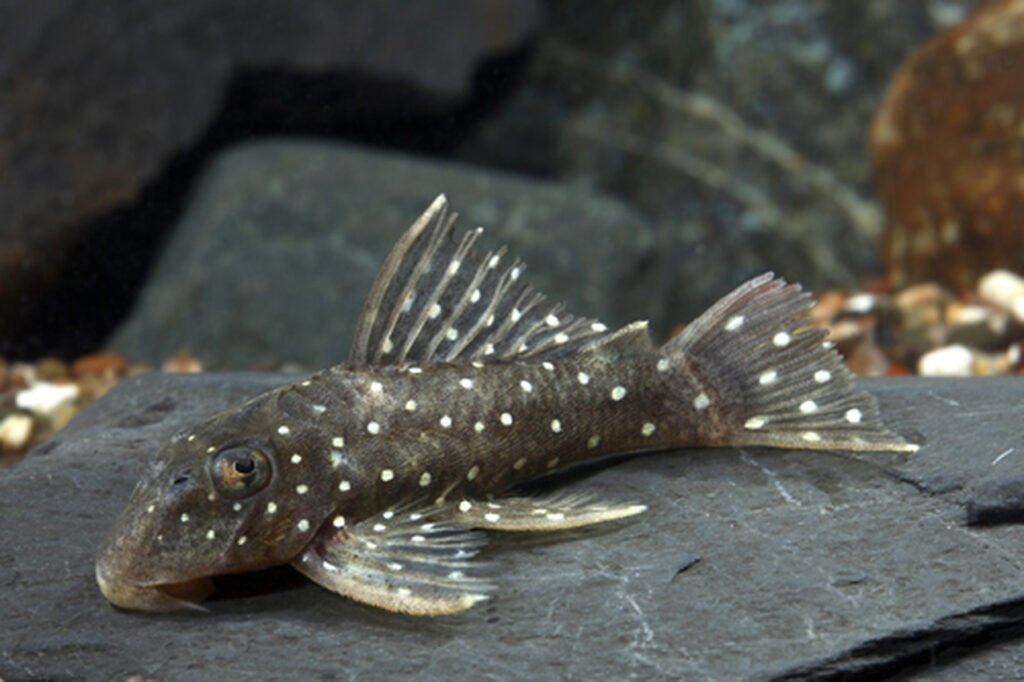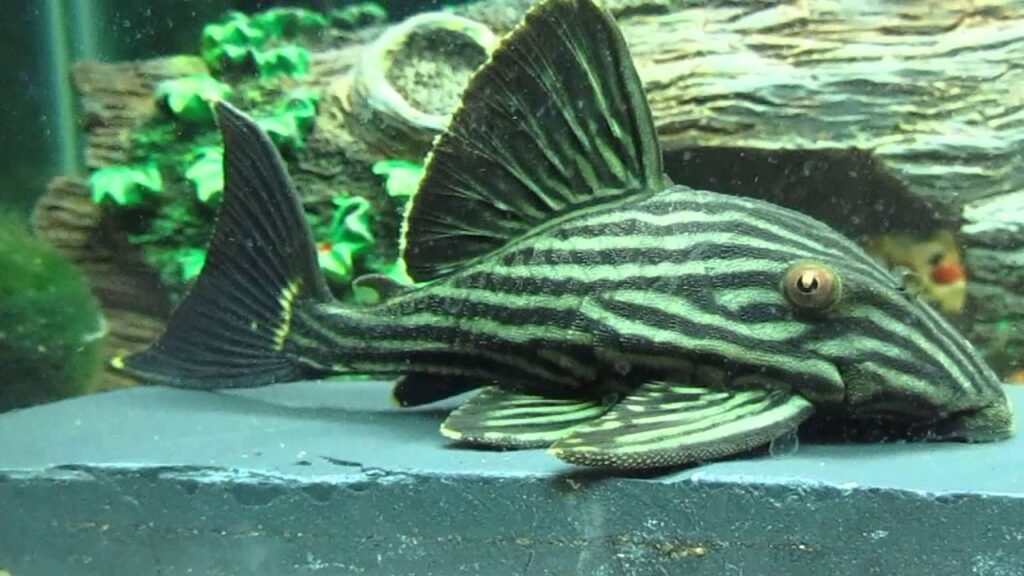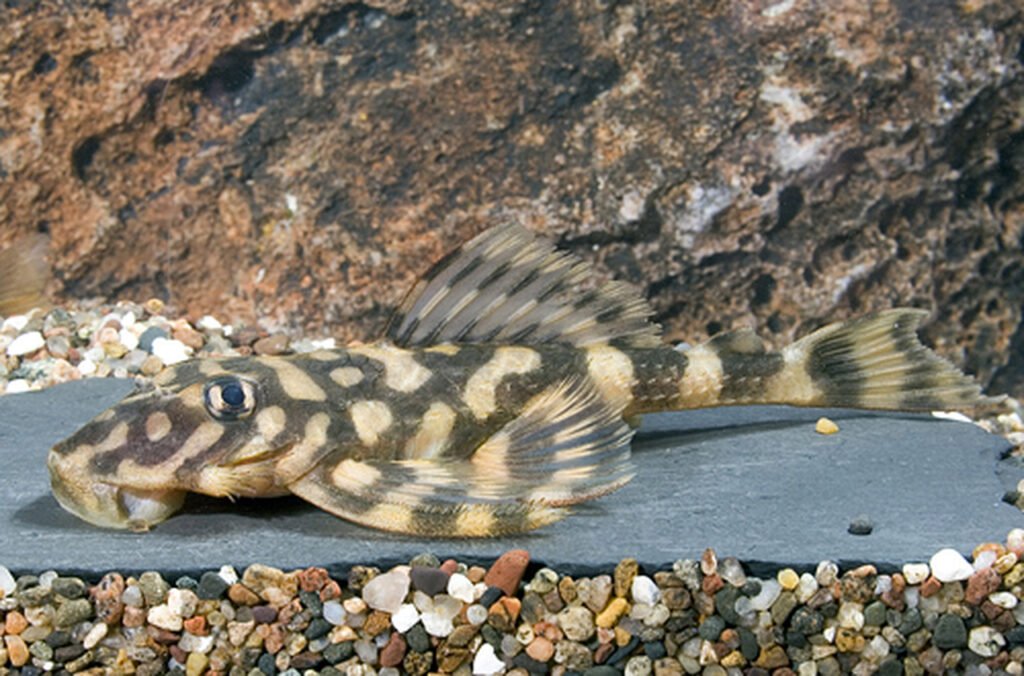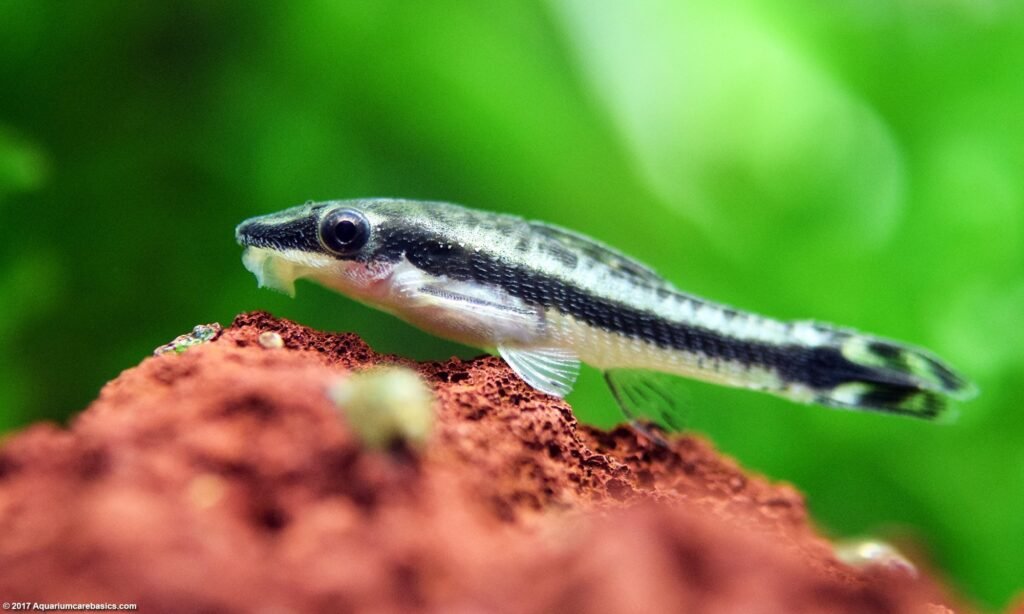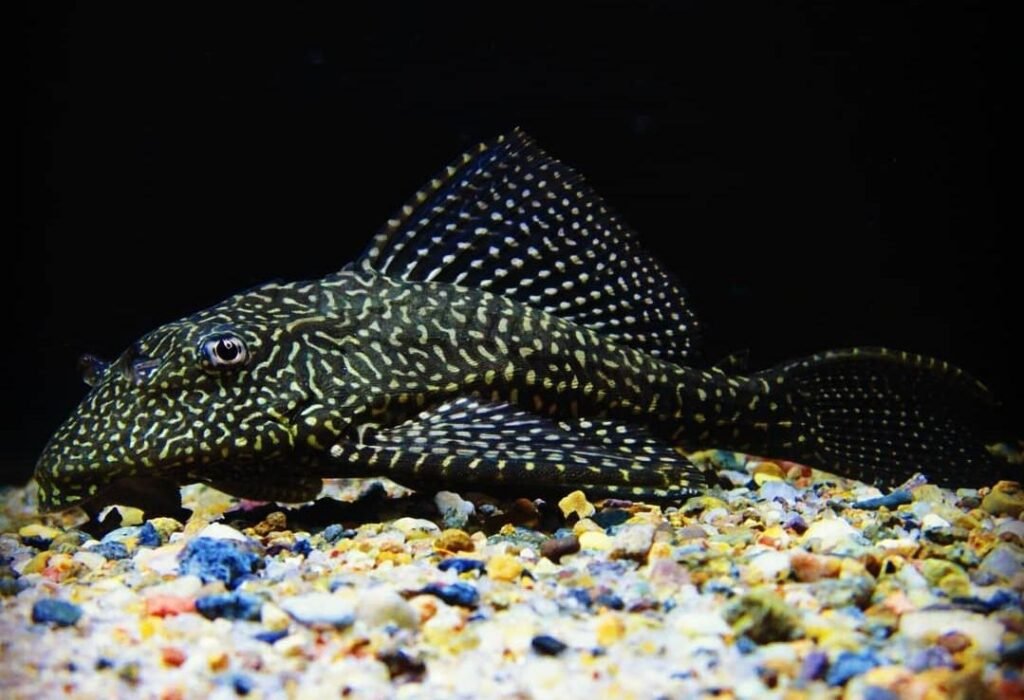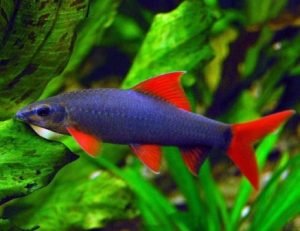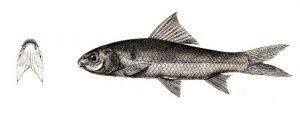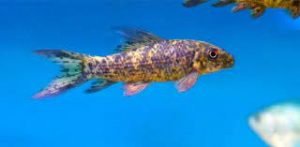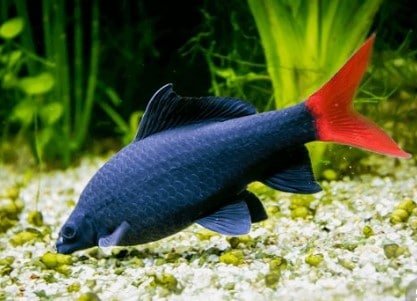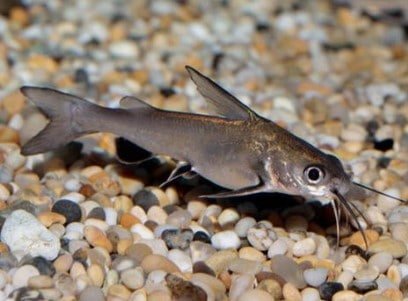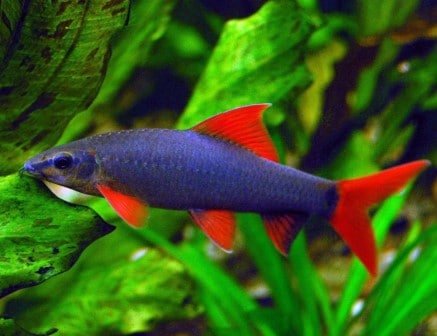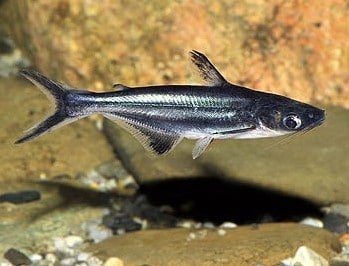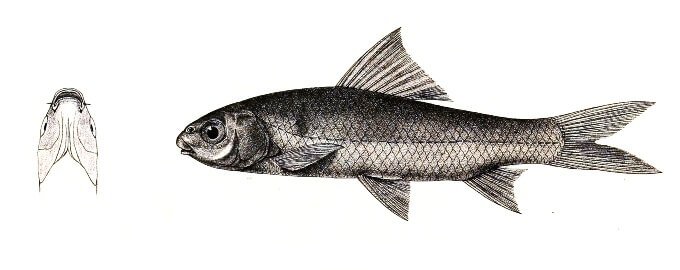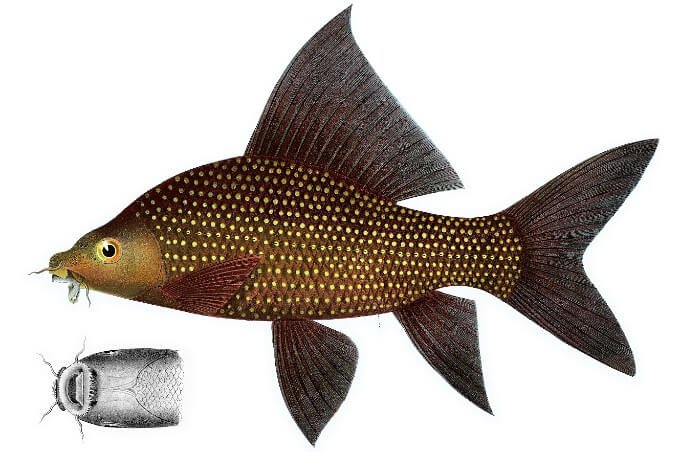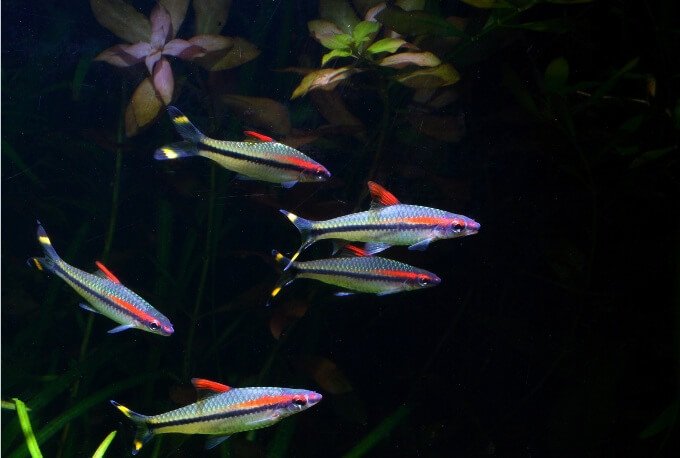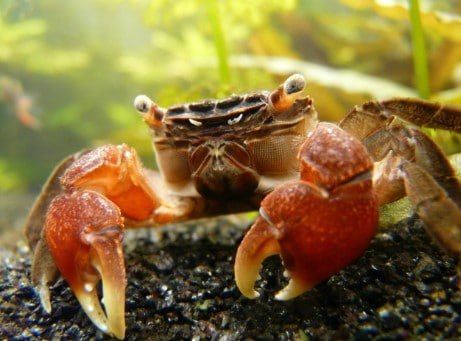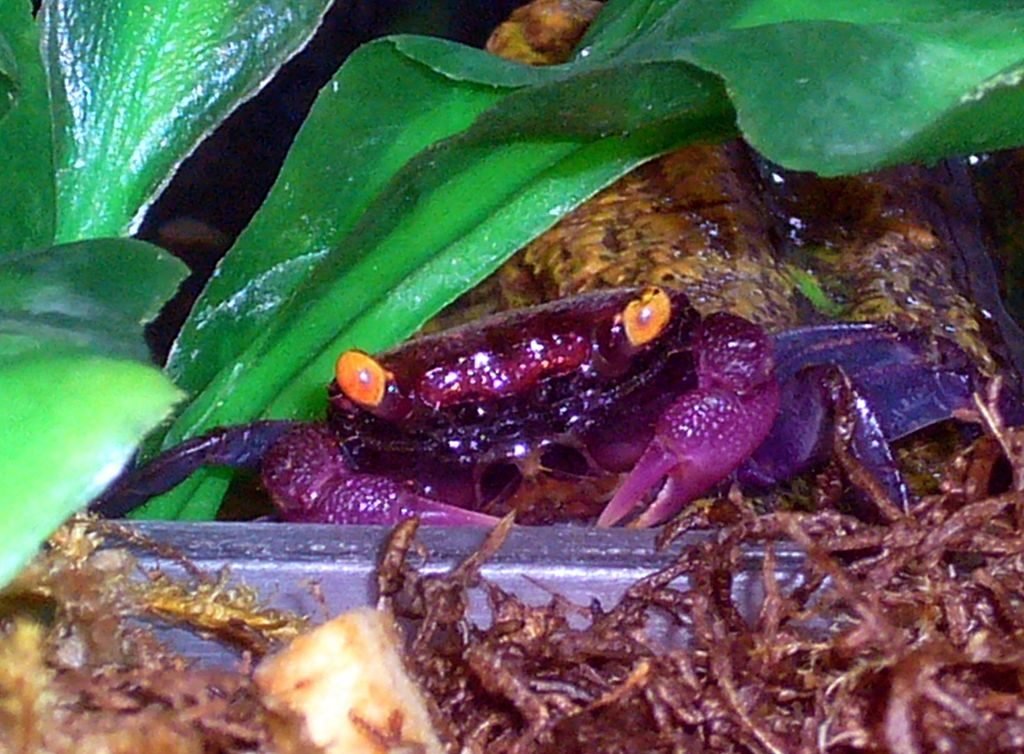Rubber Lip Pleco Care Guide & Species Profile
The following article will help you decide if the Rubber Lip Pleco is the right aquarium fish for you. You will learn about its breeding habits, diet needs, personality and tankmate compatibility with other tank mates, and more.
This information is incredibly valuable when planning to care for Rubber Lip Plecos and makes for an informative read. I will highlight the key aspects of caring for Chaetostoma sp., commonly known as Rubber Lip Plecos. This species is often confused with bristle nose plecos. However, there are distinct differences in their care requirements.
Rubber-lipped Pleco: Care and species guide for beginners.
Rubber Lipped Plecos are a pleco species that can feed on algae and also on tiny larvae. They reach the size of up to 4.7″.
Adult individuals maintain their habit of eating algae, being an excellent addition to the cleaning crew. They are fish with omnivorous eating habits; they will eat algae and small live or frozen food.
They may have some difficulty in accepting processed foods.
A short introduction to the Rubber Lipped Pleco
Chaetostoma is part of the most extensive catfish family (Loricariidae). This fish’s other common names include Black Spotted Bulldog Pleco, Spotted Rubbernose Pleco, or simply L445.
These fish have enlarged gills that are believed to work together to breathe as they rest or feed. Similarly, the Rubber Lip Pleco are frequent algae eaters under some circumstances. It is a freshwater, bottom-dweller fish of the genus Chaetostoma.
Rubber-lipped Pleco: Ultimate Species Care Guide.
Small catfish, including rubber-lipped plecos, can be an excellent addition to a tropical freshwater aquarium. They are not very resistant to pollutants in the water and require high levels of O². The aquarium must be well matured; this species is not recommended for beginner aquarists.
Habitat and origins
The Rubber-Lipped pleco is found in the Apuré River and Magdalena Basin in South America. The Rubber Lip Plecos are found in several other South American rivers.
The water in certain parts of its surface drop in temperature, which can sometimes be considered a kind of milder water, somewhere around 68º F. The species is found in Venezuela, Colombia, Brazil, and the United States, where it would probably be an invasive species.
The species were found across the northern region of South America.
Habitat and tank conditions
The Rubber Lip Pleco needs specific requirements, like fast-flowing waters and large tank size; they do not thrive in any home aquarium and require some attention.
They also provide excellent tankmates for fish from fast-flowing waters, like pike cichlid and silver dollars.
Indeed a relatively easy species to find in specialized stores. A challenging pleco for more experienced aquarists, who like fast and transparent water aquaria.
Rubber Lip Pleco Diet & Food

In the natural habitat, Rubber Lip Pleco‘s diet includes all types of things. They will accept and delight in fresh or live food of animal and plant origin, as well as algae and biofilm.
They can be somewhat selective in eating, presenting a particular difficulty to start accepting industrialized feeds. Offer everything the animal needs; that way, you will have a less stressed and healthier animal.
Some of our favorite vegetable options for this fish are algae powder, leafy greens, cucumbers, and peas.
Rubber lip Pleco Care
Rubber Lip Plecos care is not particularly challenging as it seems, and some aquarists may realize it soon enough.
These fish are very hardy (within their specifics) because of the varying habitat they come from. It’s always a good idea to understand the ideal conditions so you can give the most outstanding care possible. Good owners strive for perfection!
Frequently Asked Questions
What is a rubber lip pleco?
The Rubber-Lipped pleco is a bottom-dweller fish and part of the genus Chaetostoma. Plecos are a common addition to all modern home aquarium systems for helping clean the tank’s surface from algae.
Bulldog plecos have extended gills that have evolved to allow the fish to breathe while feeding or are attached to rocks.
The Rubber Lip Pleco can’t grow as big as the Common pleco and can be an excellent choice to keep it; small-sized plecos do not require giant aquariums.
How do I care for my rubber-lipped pleco?
Care for the rubber-lipped pleco is no longer difficult; after all, when we have a designed system to keep it alive and healthy, it is a rewarding and relatively simple experience. Here are their ideal conditions to keep them busy and healthy.
Is rubber lip pleco suitable for an aquarium?
 Rubber Lip Plecos are an excellent choice for more experienced aquarists; they need well-matured aquariums, water with medium hardness, milder temperatures, and a strong water flow.
Rubber Lip Plecos are an excellent choice for more experienced aquarists; they need well-matured aquariums, water with medium hardness, milder temperatures, and a strong water flow.
Despite their incredibly long and impressive life spans, this can be a daunting task when you first introduce them to an aquarium.
The most important consideration should be the seriousness of your fish care.
Try to keep them away from other large bottom species if possible; this way, the pleco remains calmer, in addition to not having to share hiding places or feeding spots.
If you love freshwater aquarium plants, it might give the tank life too; choose species that adapt to the water parameters required for the fish.
Rubber lips pleco is a species with a long lifespan that can reach 12 years if kept in ideal conditions. A breeding pair can become aggressive towards other plecos during breed season.
Plecos do not eat fish poop; that’s a myth. They are a capable algae eater and easily clean an algae-infested aquarium.
Tank Mates
There is a wide range of freshwater fish who are happy to coexist with these plecos. Here’s a listing of fish living in a tank with a Rubber Lip Pleco, along with helpful information about each species. Bala sharks are peaceful, although they develop an appetite for small fish as they age.
Cory catfish are also bottom-feeder scavengers who are great at cleaning and maintaining the aquarium. Gouramis are wonderful aquarium companions because they enjoy being joined up with slow-moving fish. Plecos prefer to keep it quiet and don’t enjoy bullying. Aggressive Cichlids and Tiger Barbs can’t be tolerated.
Take care
Rubber Lip Plecos are, in general, good fish to keep. They are not particularly vulnerable to sickness, and as long as the tank is clean, you will not be faced with problems.
The periodic water change is also crucial as your tank should maintain a healthy balance to avoid diseases and intoxications. Scaleless fish are sensitive to salt in the water; thus, be careful when adding salt to treatment problems.
Go for soft, smooth pebbles or sand over gravel and sharp sand for protection of fish. Keep plastic plants at a minimum and try to keep as many live plants as possible.
Appearance
The Rubber Lipped Pleco has an iconic ”pleco” look. Their head is almost identical to those we usually expect with their pleco form.
They have an enormous mouth with a snout that descends to the top of the skull. Their eyes are situated at the top of the head. They present a slightly elevated posture.
This eye positioning allows them to watch for predators while scavenging the substrate. In addition, they also have dark circles covering their body.
Behavior & compatibility
Rubber Lipped plecos don’t like the aggressiveness of other tank mates. They all want to lie alone or sit peacefully in a cave or a hideout.
They also enjoy hiding under smooth-surfaced round rocks which resemble the bottom of a river. Rubber Lipped plecos will not bother other fish unless there are other plecos because they can be territorial.
These animals are usually nocturnal, and it’s easy for them to do little feed before the lighting goes out. They won’t be more active if anything stresses them up and are also shy in general. At night they feed on algae and biofilm.
Behavior & Temperament
Rubber Lip Pleco was peaceful and would not be any problem to other tank habitats. They are one of the most peaceful freshwater species we know of.
You’ll sometimes see them parking at one place or gradually working around a protected spot. In open areas, they use sucker lips to latch on to whatever surface they’re looking at.
It is fun to what when they are attached to aquarium glasses. You shouldn’t expect a regular swimming show, as they are shy fish. If you own a big fish with solid energy and good health, it is a good idea not to put it together with rubber-lipped plecos.
A common misconception about the Rubber Lip Plecos
Fish stores can confuse Rubber Lip Pleco with other types of plecos. What makes the differences between these species unique are their maximum density and color.
A true RL pleco will reach at least 4.5 inches in body length and not experience drastic color change. While sexually maturing, the rubber lining will shift from grey to gold color.
I hadn’t the chance to see mine turn gold like that. But it seems the fish decide when this happens and if and when. Both of these fish have similar care needs (except for tank size and flow).
Summary of species
This species can be found in the Magdalena River in Columbia and the Apure River in Venezuela and spread across the Amazon basin.
These species primarily eat algae in the wild and spends their time around the substrate since it feeds from the bottom.
This information is essential to know because it will affect their keeping in the tank. This species is relatively robust and can tolerate a decent range of water conditions in the wild.
It is also known as the rubber nose pleco, and the rubber lipped pleco is also found in smaller rivers and waters bodies and larger rivers.
Diet
Rubber Lip Plco is not too fussy eaters. They will eat almost everything that is in the water. Feeding plecos a rich and varied diet with algae, vegetables, and animal protein is essential.
You can place zucchini, peas, green beans, and spinach in the tank for your fish to chew to ensure a healthy, balanced diet. You may also occasionally offer bloodworms, tubifex, nauplii, and earthworms. Remember that the more you feed it, the more poo it will produce. Slowly try to introduce foods like algae wafers to its diet.
Going forward
These are intriguing creatures that are good enough for the proper aquatic enthusiast. If you’re searching for a unique and easy to care fish, which are not particularly popular, this could be for you.
We are dedicated to writing the best fish care guide online. We have always enjoyed the rubber nose pleco and the performance regardless of what it does.
Breeding
There are no verified reports of successfully breeding rubber lips plecos. The breeding process can be laborious for this fish, whether it’s successful or not.
It best not to try breeding this fish without being confident in the results. We would love to hear from someone who successfully bred this species, as we do wish to feature their tips in this guide.
Very rarely is breeding observed in captive conditions. Usually, a male attaches itself upside out to a flat spot beneath the surface below where the eggs hatch. This way, he can guard the fry against predators.
Mistaken identity
The Rubber Lip Pleco is sometimes confused with Rubber Pleco, Parancistrus aurantiacus. The Rubber pleco is spotless in its nose.
Juveniles can be mistaken; notice if your fish grows slowly until finally, it reaches the proper shape around five inches; around that size, the differences are evident, as the rubber lipped has black dots across the body.
The rubber pleco can transform its grayish color over its aging growth to a length extending up to 7 or 8 inches. On rare occasions, both species of fish are advertised incorrectly.
Life span
The average life span of a rubber-lipped pleco is between 10-12 years with reasonable maintenance. These assumptions assume you have provided them the ideal habitat and a good diet.
High-stress levels can have a detrimental outcome on the longevity of fish. If you pair them with the wrong tankmate, they might feel stressed and become sick or even die.
Tank setup and habitat requirements
If you have basic knowledge of this species, you can easily set up a tank for your pleco. Depending on your current setup, you may not have to make corrections before adding RL to your community tank.
Where can I buy this rare fish?
After some feedback on the site, I realized not everyone was lucky enough to find the Rubber-Lipped pleco at their fishing shop. But you can always buy it online, from reliable fish stores.
If you’re not able to find this pleco in the country you live in, you can also order them online. One place where I have discovered Rubber Lip Plecos is AquaBid, but there are other online markets that you might try.
Visit the link and read the retailers specializing in selling live freshwater fish to increase your chances of finding a live fish.
Common disease
The RL pleco, like many other plecos, is exceptionally resilient. They are susceptible to toxins and contaminants in water.
Plecos do not quickly become sick but are sensitive to specific health problems. When you notice that the white spots don’t multiply after one day, it probably wasn’t ich; if it persists, you fish possibly is a victim of ich. This ailment is often easy to diagnose and also treat.
Final thoughts
Rubber Lip Pleco does not grow as some other pleco species, making it a good choice for the home aquarium.
However, it would help not keep this animal in a tank size of fewer than 25 gallons since they need large amounts of space and water flowing. The Rubber Lip is a peaceful and magnificent algae eater in your tropical aquarium.

![Ultimate Rubber Lip Pleco Care Guide [Size, Diet, Breeding] Rubber Lip Pleco](https://aquariumhunter.com/wp-content/uploads/2021/09/download-2.jpg)
![The 7 Best Dwarf Cichlids for Your Aquarium [complete guide] The 7 Best Dwarf Cichlids for Your Aquarium [complete guide]](https://aquariumhunter.com/wp-content/uploads/2021/09/download-1.jpg)


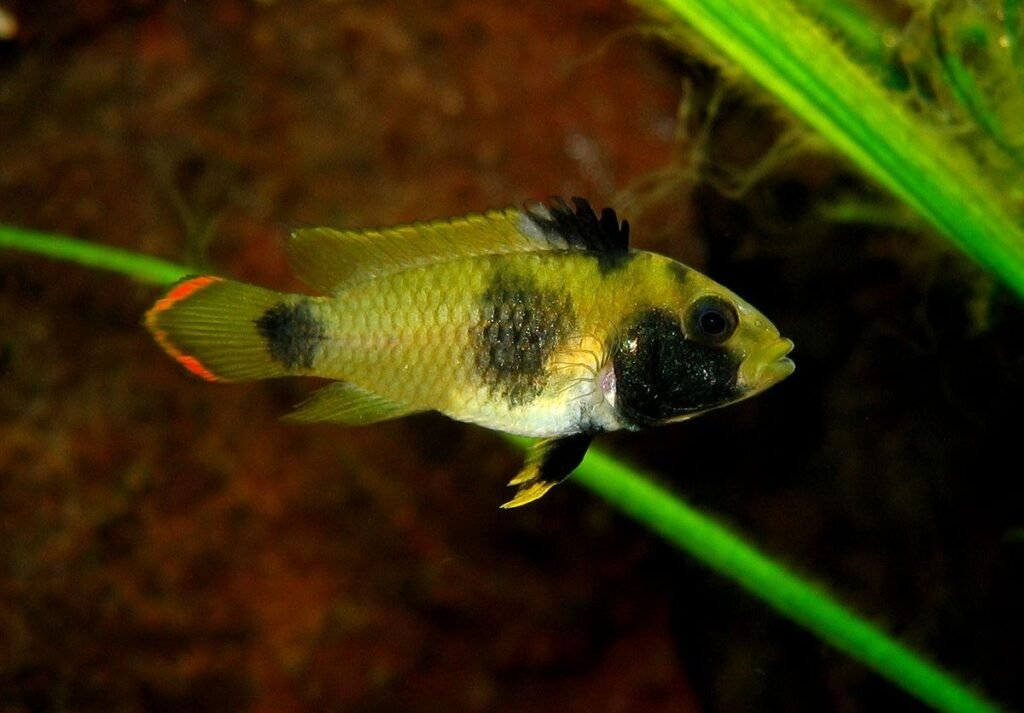



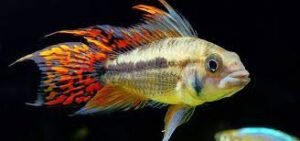
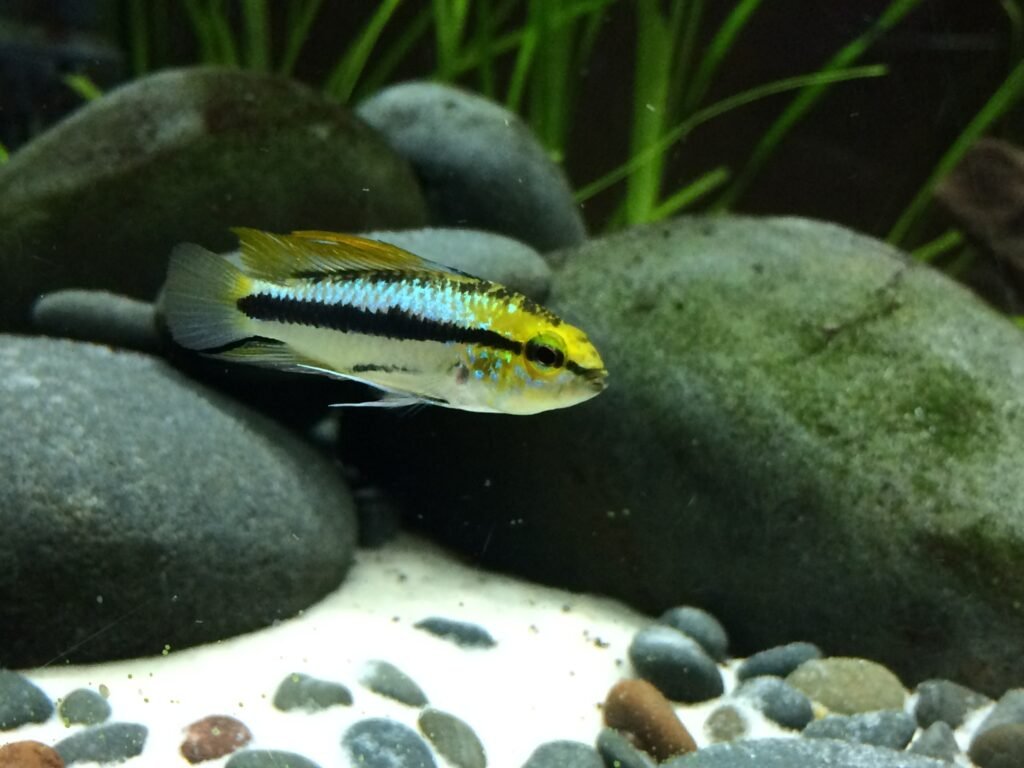
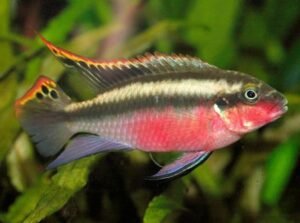
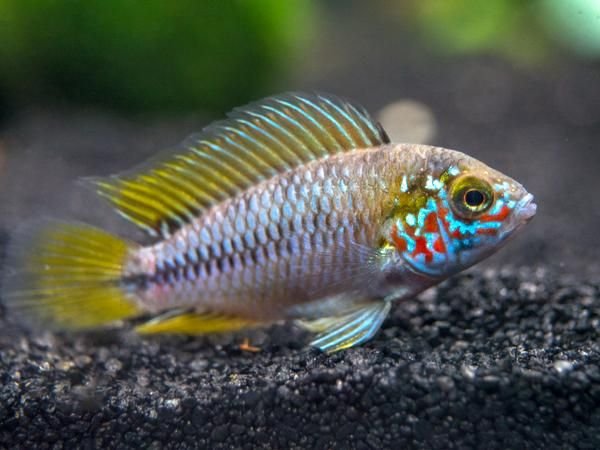


















![[Ultimate] Black Ghost Knifefish Care Guide – All you need to know Black Ghost Knifefish](https://aquariumhunter.com/wp-content/uploads/2021/09/maxresdefault-1-1.jpg)
